Set Up and Use TheGreenBow IPsec VPN Client to Connect with RV160 and RV260 Routers
Available Languages
Objective
The objective of this document is to set up and use TheGreenBow IPsec VPN Client to connect with the RV160 and RV260 routers.
Introduction
A Virtual Private Network (VPN) connection allows users to access, send, and receive data to and from a private network by means of going through a public or shared network such as the Internet but still ensuring a secure connection to an underlying network infrastructure to protect the private network and its resources.
A VPN tunnel establishes a private network that can send data securely using encryption and authentication. Corporate offices often use a VPN connection since it is both useful and necessary to allow their employees to have access to their private network even if they are outside the office.
The VPN allows a remote host, or client, to act as if they were located on the same local network. The RV160 router supports up to 10 VPN tunnels, and the RV260 supports up to 20. A VPN connection can be set up between the router and an endpoint after the router has been configured for Internet connection. The VPN client is entirely dependent on the settings of the VPN router to be able to establish a connection. The settings must match exactly or they cannot communicate.
TheGreenBow VPN Client is a third-party VPN client application that makes it possible for a host device to configure a secure connection for client-to-site IPsec tunnel with the RV160 and RV260 series routers.
Benefits of using a VPN Connection
Using a VPN connection helps protect confidential network data and resources.
It provides convenience and accessibility for remote workers or corporate employees since they will be able to easily access the main office without having to be physically present and yet, maintain the security of the private network and its resources.
Communication using a VPN connection provides a higher level of security compared to other methods of remote communication. An advanced encryption algorithm makes this possible, protecting the private network from unauthorized access.
The actual geographic locations of the users are protected and not exposed to the public or shared networks like the Internet.
A VPN allows new users or a group of users to be added without the need for additional components or a complicated configuration.
Risks of using a VPN Connection
There can be security risks due to misconfiguration. Since the design and implementation of a VPN can be complicated, it is necessary to entrust the task of configuring the connection to a highly knowledgeable and experienced professional in order to make sure that the security of the private network would not be compromised.
It may be less reliable. Since a VPN connection requires an Internet connection, it is important to have a provider with a proven and tested reputation to provide excellent Internet service and guarantee minimal to no downtime.
If a situation occurs where there is a need to add new infrastructure or a new set of configurations, technical issues may arise due to incompatibility especially if it involves different products or vendors other than the ones you are already using.
Slow connection speeds can occur. If you are using a VPN client which provides free VPN service, it may be expected that your connection would also be slow since these providers do not prioritize connection speeds. In this article, we will be using a paid third party which should eliminate this issue.
Basic Topology of the Client-to-Site Network
This is the basic layout of the Network for setup. The Public WAN IP addresses have been partially blurred, or are showing an x in place of actual numbers to protect this network from attacks.
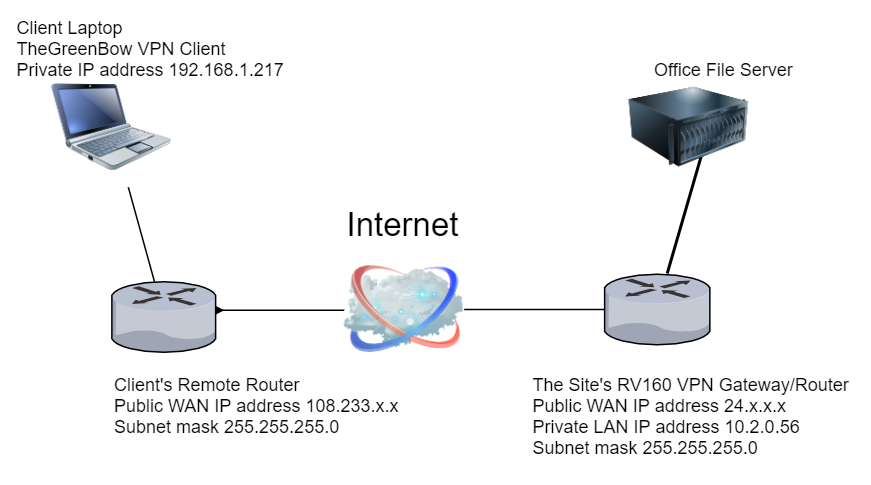
This article will walk through the steps needed to configure the RV160 or RV260 router at the site for the following:
- A User Group — VPNUsers
- User Accounts (one or more users) that will be allowed access as a client
- An IPsec Profile — TheGreenBow
- A Client-to-Site Profile — Client
- You will also be shown how to view the VPN Status at the site once the client is connected
Note: You can use any name for the User Group, IPsec Profile, and Client-to-Site Profile. The names listed are just examples.
This article also explains the steps that each client would take to configure TheGreenBow VPN on their computer:
- Download and set up TheGreenBow VPN Client Software
- Configure the Phase 1 and 2 Settings for the client
- Start and verify a VPN Connection as a client
It is essential that every setting on the router on site matches the client settings. If your configuration does not lead to a successful VPN connection, check all settings to make sure they match. The example shown in this article is just one way to set up the connection.
Table of Contents
Configure on the RV160 or RV260 Router at the Site
Configure the Phase 1 and 2 Settings
Create a Client-to-Site Profile
Configure at the Client Location
Start a VPN Connection as a Client
Check Connectivity on the RV160 or RV260
Verify the VPN Status at the Site
Applicable Devices
- RV160
- RV260
Software Version
- 1.0.00.15
Configure VPN Client at the Site on the RV160 or RV260 router
Create a User Group
Important Note: Please leave the default admin account in the admin group and create a new user account and user group for TheGreenBow. If you move your admin account to a different group, you will prevent yourself from logging into the router.
Step 1. Log in to the web-based utility of the router.
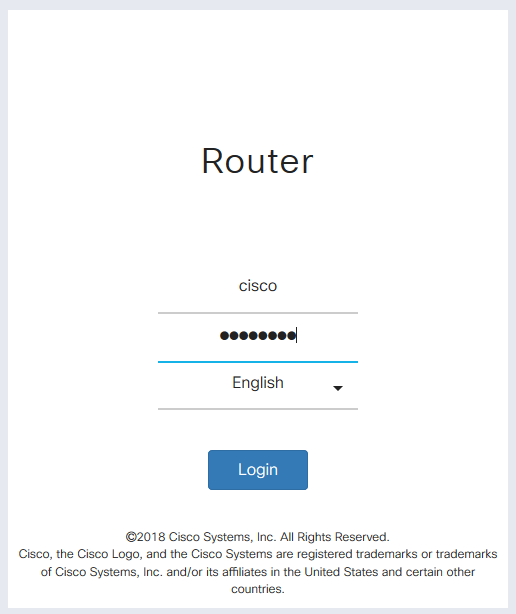
Step 2. Select System Configuration > User Groups.
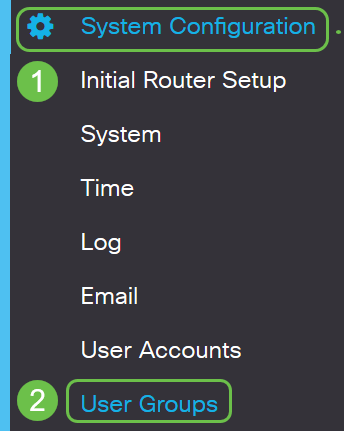
Step 3. Click the plus icon to add a User Group.
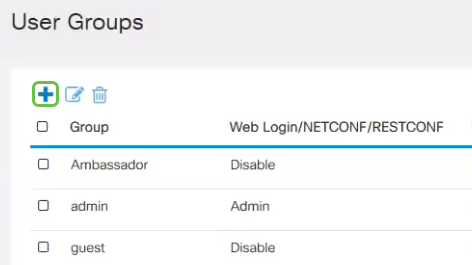
Step 4. In the Overview area, enter the name of the group in the Group Name field.
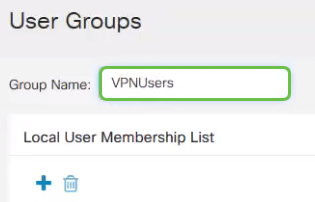
Step 5. Under Local User Membership List, click the plus icon and select the user from the drop-down list. If you want to add more, press the plus icon again and select another member to be added. Members can only be part of one group. If you do not have all of the users entered already, you can add more in the Create a User Account section.

Step 6. Under Services, choose a permission to be granted to the users in the group. The options are:
- Disabled — This option means that members of the group are not permitted to access the web-based utility through a browser.
- Readonly — This option means that the members of the group can only read the status of the system after they log in. They cannot edit any of the settings.
- Admin — This option gives the members of the group read and write privileges, and be able to configure the system status.

Step 7. Click the plus icon to add an existing Client-to-Site VPN. If you have not configured this, you can find information in this article under the section Create a Client-to-Site Profile.

Step 8. Click Apply.

Step 9. Click Save.

Step 10. Click Apply once again to save the Running Configuration to the Startup Configuration.
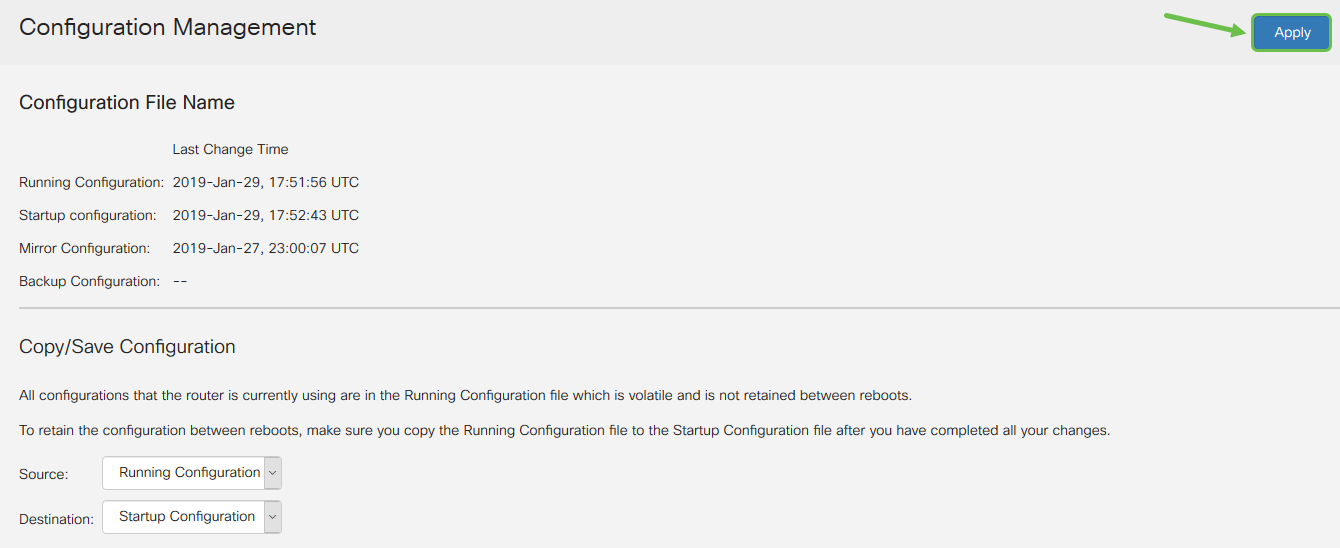
Step 11. When you receive the confirmation, click OK.
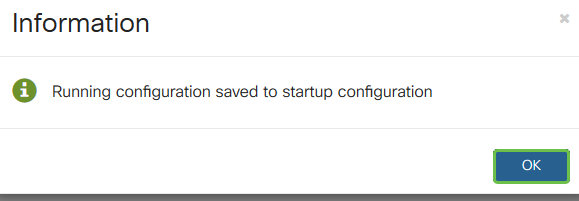
You should now have successfully created a user group on the RV160 or RV260 Series Router.
Create a User Account
Step 1. Log in to the web-based utility of the router and choose System Configuration > User Accounts.

Step 2. In the Local Users area, click the add icon.
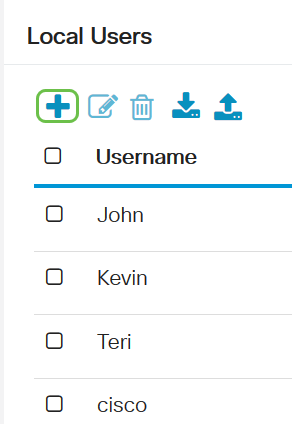
Step 3. Enter a name for the user in the Username field, the password, and the group you want to add the user to from the drop-down menu. Click Apply.
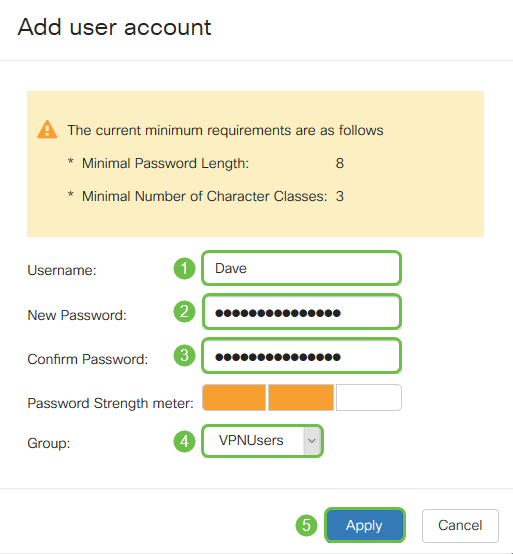
Note: When the client sets up TheGreenBow Client on their computer, they would log in with this same username and password.
Step 4. Click Save.

Step 5. Click Apply once again to save the Running Configuration to the Startup Configuration.
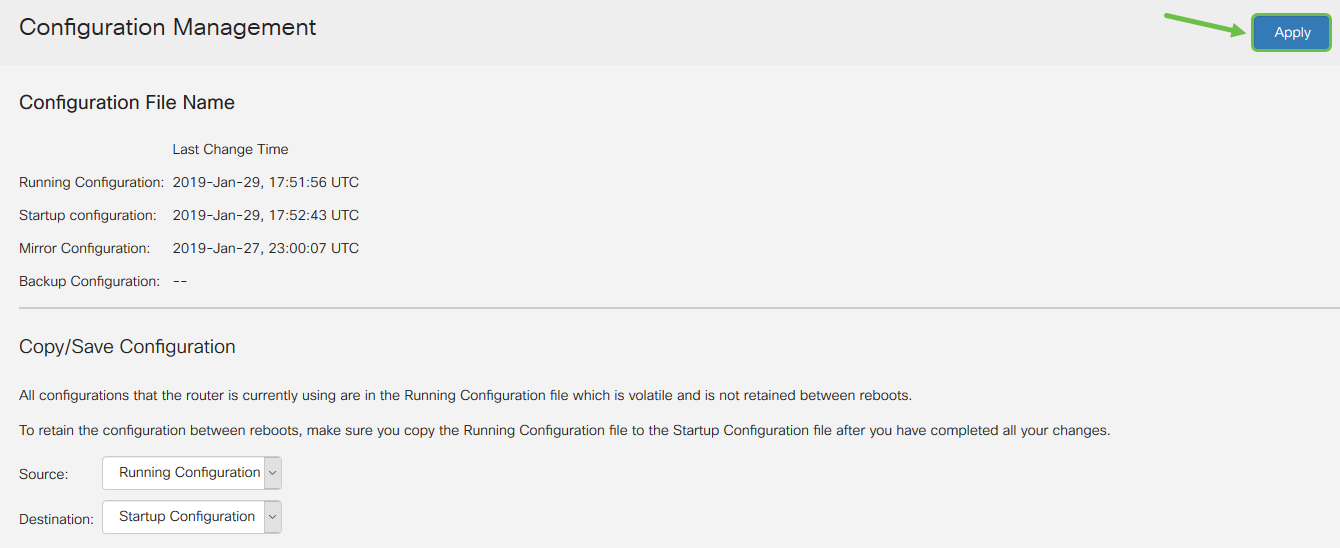
Step 6. When you receive the confirmation, click OK.

You should now have created a User Account on your RV160 or RV260 router.
Configure IPsec Profile
Step 1. Log in to the web-based utility of the RV160 or RV260 router and choose VPN > IPSec VPN > IPSec Profiles.
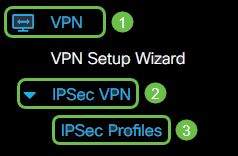
Step 2. The IPSec Profiles Table shows the existing profiles. Click the plus icon to create a new profile.
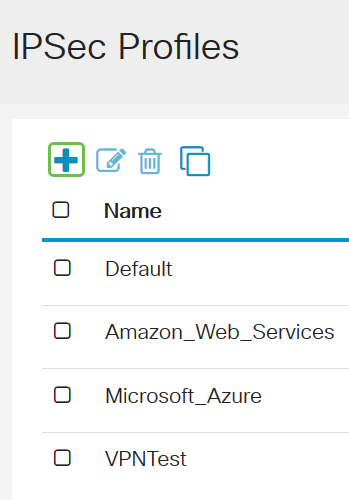
Note: Amazon_Web_Services, Default, and Microsoft_Azure are default profiles.
Step 3. Create a name for the profile in the Profile Name field. The profile name must contain only alphanumeric characters and an underscore (_) for special characters.
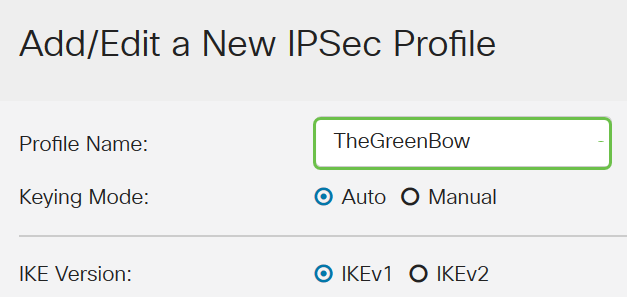
Step 4. Click a radio button to determine the key exchange method the profile will use to authenticate. The options are:
- Auto — Policy parameters are set automatically. This option uses an Internet Key Exchange (IKE) policy for data integrity and encryption key exchanges. If this is chosen, the configuration settings under the Auto Policy Parameters area are enabled.
- Manual — This option allows you to manually configure the keys for data encryption and integrity for the VPN tunnel. If this is chosen, the configuration settings under the Manual Policy Parameters area are enabled. This is not widely used.
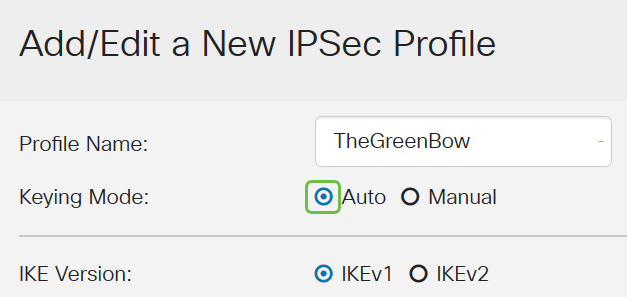
Note: For this example, Auto was chosen.
Step 5. Select the IKE Version. Be sure when you set up TheGreenBow on the client side, the same version is selected.
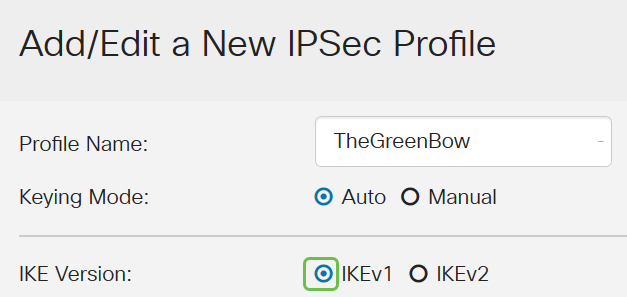
Configure the Phase 1 and 2 Settings
Step 1. In the Phase 1 Options area, choose the appropriate Diffie-Hellman (DH) group to be used with the key in Phase 1 from the DH Group drop-down list. Diffie-Hellman is a cryptographic key exchange protocol which is used in the connection to exchange pre-shared key sets. The strength of the algorithm is determined by bits. The options are:
- Group2-1024 bit — This option computes the key slower, but is more secure than Group 1.
- Group5-1536 bit — This option computes the key the slowest, but is the most secure.
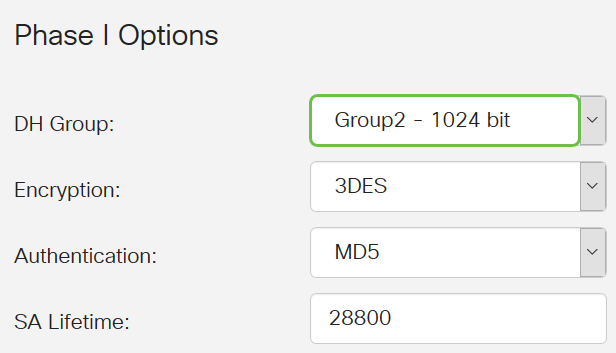
Step 2. From the Encryption drop-down list, choose an encryption method to encrypt and decrypt Encapsulating Security Payload (ESP) and Internet Security Association and Key Management Protocol (ISAKMP). The options are:
- 3DES — Triple Data Encryption Standard. Not recommended. Only use it if it’s required for backwards compatibility as it’s vulnerable to some “block collision” attacks.
- AES-128 — Advanced Encryption Standard uses a 128-bit key. Advanced Encryption Standard (AES) is a cryptographic algorithm that is designed to be more secure than DES. AES uses a larger key size which ensures that the only known approach to decrypt a message is for an intruder to try every possible key.
- AES-192 — Advanced Encryption Standard uses a 192-bit key.
- AES-256 — Advanced Encryption Standard uses a 256-bit key. This is the most secure encryption option.

Note: AES is the standard method of encryption over DES and 3DES for its greater performance and security. Lengthening the AES key will increase security with a drop in performance.
Step 3. From the Authentication drop-down list, choose an authentication method that will determine how ESP and ISAKMP are authenticated. The options are:
- MD5 — Message-Digest Algorithm has a 128-bit hash value.
- SHA-1 — Secure Hash Algorithm has a 160-bit hash value.
- SHA2-256 — Secure Hash Algorithm with a 256-bit hash value. This is the most secure and recommended algorithm.
Note: Make sure that both ends of the VPN tunnel use the same authentication method.
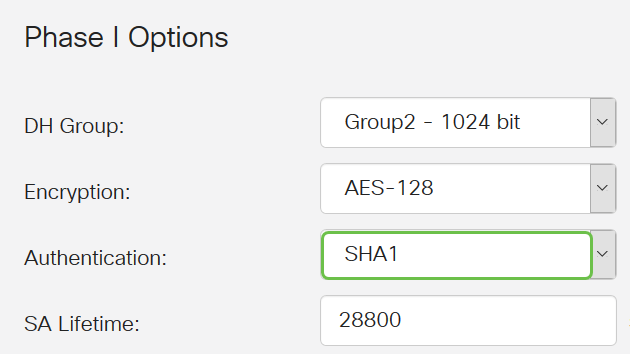
Note: MD5 and SHA are both cryptographic hash functions. They take a piece of data, compact it, and create a unique hexadecimal output that typically cannot be reproduced. In this example, SHA1 is chosen.
Step 4. In the SA Lifetime field, enter a value between 120 and 86400. The default value is 28800. The SA Lifetime (Sec) tells you the amount of time, in seconds, an IKE SA is active in this phase. A new Security Association (SA) is negotiated before the lifetime expires to ensure that a new SA is ready to be used when the old one expires. The default is 28800 and the range is from 120 to 86400. We will be using 28800 seconds as our SA Lifetime for Phase I.
Note: It is recommended that your SA Lifetime in Phase I is longer than your Phase II SA Lifetime. If you make your Phase I shorter than Phase II, then you will be having to renegotiate the tunnel back and forth frequently as opposed to the data tunnel. Data tunnel is what needs more security so it is better to have the lifetime in Phase II to be shorter than Phase I.
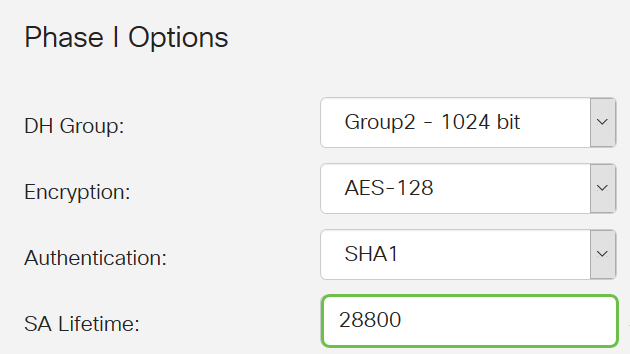
Step 5. From the Protocol Selection drop-down list in the Phase II Options area, choose a protocol type to apply to the second phase of the negotiation. The options are:
- ESP — This option is also known as Encapsulating Security Payload. This option encapsulates the data to be protected. If this option is chosen, proceed to Step 6 to choose an encryption method.
- AH — This option is also known as Authentication Header (AH). It is a security protocol which provides data authentication and optional anti-replay service. AH is embedded in the IP datagram to be protected. If this option is chosen, skip to Step 7.
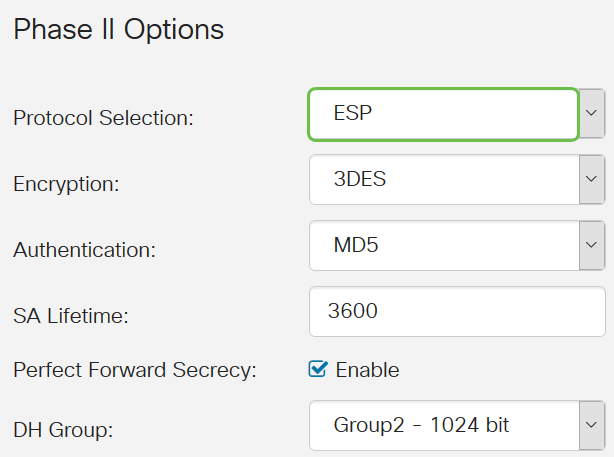
Step 6. If ESP was chosen in Step 6, choose an Encryption. The options are:
- 3DES — Triple Data Encryption Standard
- AES-128 — Advanced Encryption Standard uses a 128-bit key.
- AES-192 — Advanced Encryption Standard uses a 192-bit key.
- AES-256 — Advanced Encryption Standard uses a 256-bit key.

Step 7. From the Authentication drop-down list, choose an authentication method that will determine how ESP and ISAKMP are authenticated. The options are:
- MD5 — Message-Digest Algorithm has a 128-bit hash value.
- SHA-1 — Secure Hash Algorithm has a 160-bit hash value.
- SHA2-256 — Secure Hash Algorithm with a 256-bit hash value.
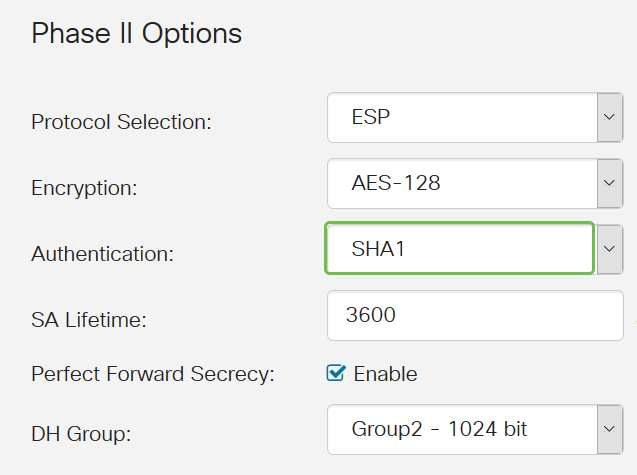
Step 8. In the SA Lifetime field, enter a value between 120 and 28800. This is the length of time the IKE SA will remain active in this phase. The default value is 3600.
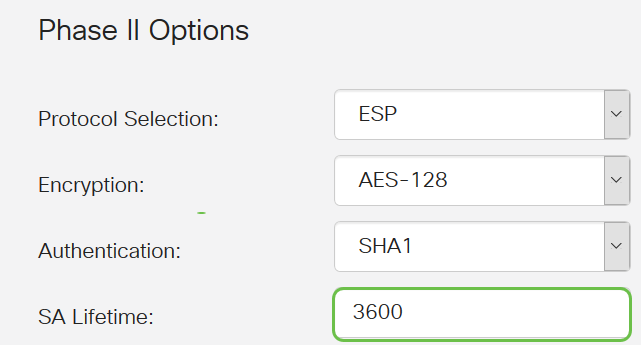
Step 9. (Optional) Check the Enable Perfect Forward Secrecy check box to generate a new key for IPsec traffic encryption and authentication. Perfect Forward Secrecy is used to improve the security of communications transmitted across the Internet using public key cryptography. Check the box to enable this feature, or uncheck the box to disable this feature. This feature is recommended.

Step 10. From the DH Group drop-down list, choose a DH group to be used with the key in Phase 2. The options are:
- Group2-1024 bit — This option computes the key faster, but is less secure.
- Group5-1536 bit — This option computes the key the slowest, but is the most secure.
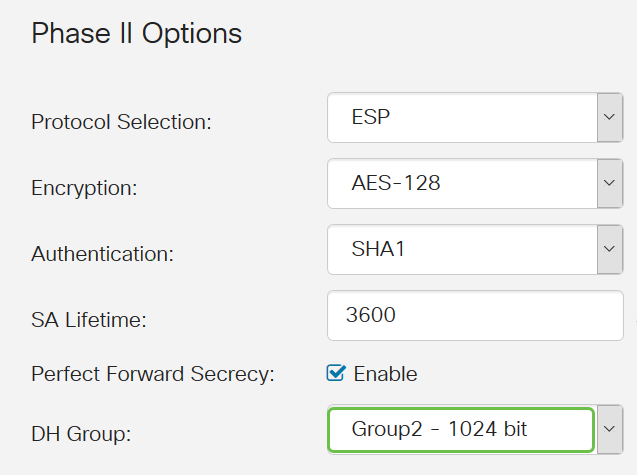
Step 11. Click Apply.

Step 12. Click Save to save the configuration permanently.

Step 13. Click Apply once again to save the Running Configuration to the Startup Configuration.

Step 14. When you receive the confirmation, click OK.

You should now have successfully configured an IPsec Profile on your RV160 or RV260 router.
Create a Client-to-Site Profile
Step 1. Choose VPN > IPSec VPN > Client-to-Site .
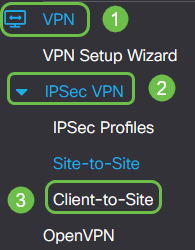
Step 2. Click the plus icon.

Step 3. Under the Basic Settings tab, check the Enable check box to ensure that the VPN profile is active.
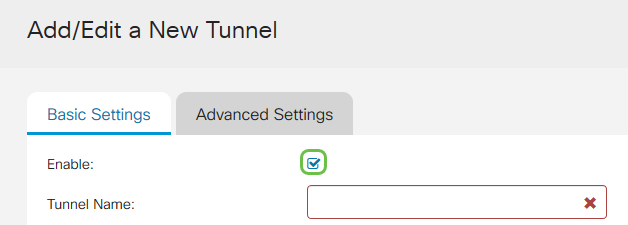
Step 4. Enter a name for the VPN connection in the Tunnel Name field.
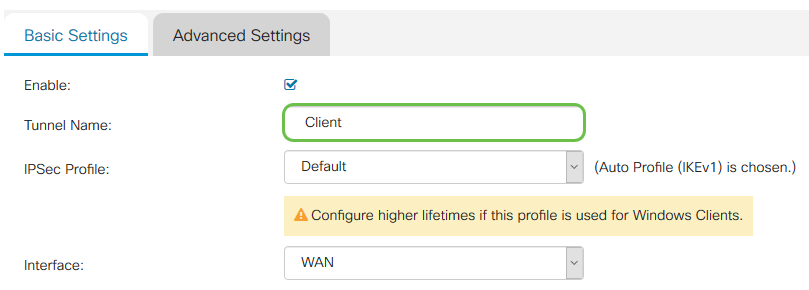
Step 5. Choose the IPsec Profile to be used from the IPsec drop-down list.
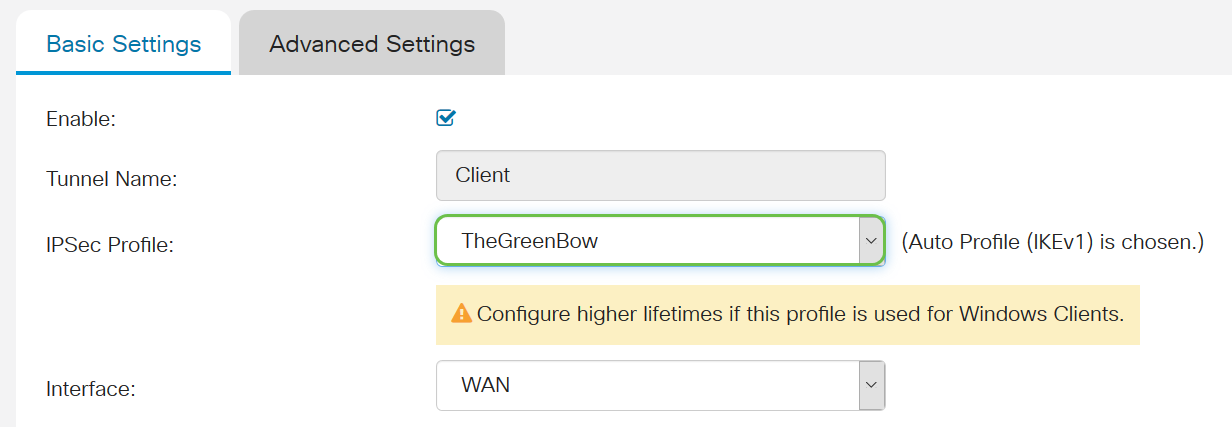
Step 6. Choose the Interface from the Interface drop-down list.
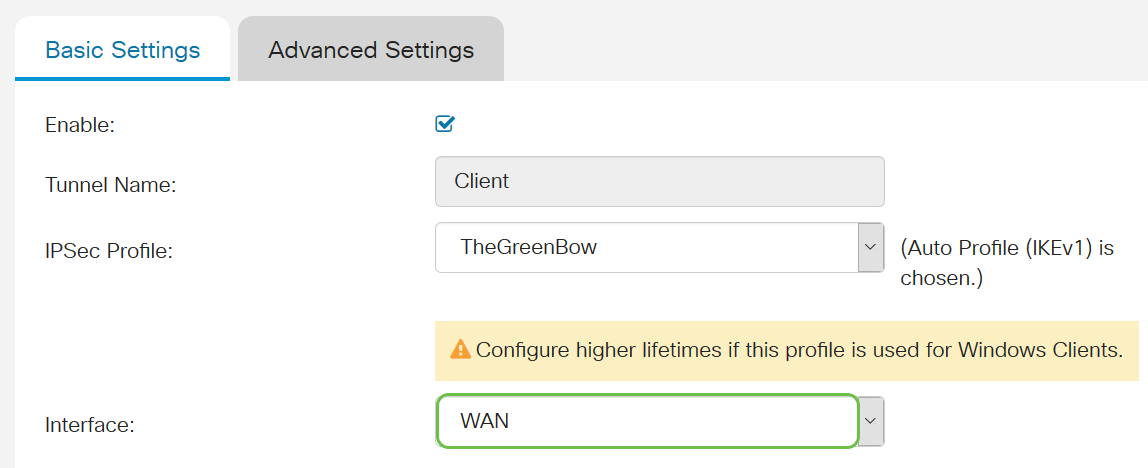
Note: The options depend on the model of router you are using. In this example, WAN is chosen.
Step 7. Choose an IKE authentication method. The options are:
- Pre-shared Key — This option will let us use a shared password for the VPN connection.
- Certificate — This option uses a digital certificate that contains information such as the name, or IP address, serial number, expiration date of the certificate, and a copy of the public key of the bearer of the certificate.
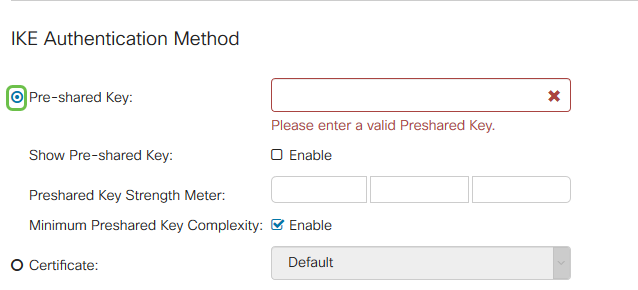
Note: A Pre-shared key can be whatever you want it to be, it just has to match at the site and with the client when they set up TheGreenBow Client on their computer.
Step 8. Enter the connection password in the Pre-shared Key field.

Step 9. (Optional) Uncheck the Minimum Pre-shared Key Complexity Enable check box to be able to use a simple password.

Note: In this example, Minimum Pre-shared Key Complexity is left enabled.
Step 10. (Optional) Check the Show Pre-shared Key Enable check box to show the password in plain text.
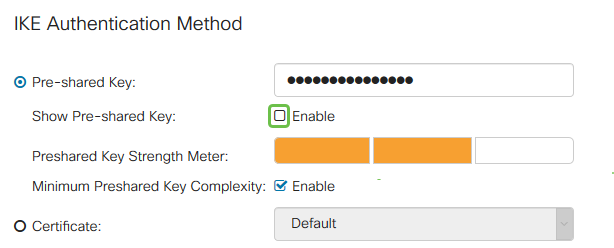
Note: In this example, Show Pre-shared key is left disabled.
Step 11. Choose a local identifier from the Local Identifier drop-down list. The options are:
- Local WAN IP — This option uses the IP address of the Wide Area Network (WAN) Interface of the VPN gateway.
- IP Address — This option allows you to manually enter an IP address for the VPN connection. This is the WAN IP address of the router at the site (office).
- FQDN — This option is also known as Fully Qualified Domain Name (FQDN). It lets you use a complete domain name for a specific computer on the Internet.
- User FQDN — This option lets you use a complete domain name for a specific user on the Internet.

Note: In this example, IP Address is chosen and the WAN IP Address of the router at the site is entered. In this example, 24.x.x.x has been entered. The complete address has been blurred for privacy purposes.
Step 12. Choose an identifier for the remote host. The options are:
- IP Address — This option uses the WAN IP address of the VPN client. To find out the WAN IP address you can enter “what is my IP” into your web browser. This is the client IP address.
- FQDN — Fully Qualified Domain Name. This option lets you use a complete domain name for a specific computer on the Internet.
- User FQDN — This option lets you use a complete domain name for a specific user on the Internet.
Note: In this example, IP Address is chosen and the current IPv4 address of the router at the location of the client is entered. This can be determined by doing a search for “What’s my IP address” in your web browser. This address can change so if you have problems connecting after a successful configuration, this can be an area to check and change on both the client and at the site.

Step 13. (Optional) Check the Extended Authentication check box to activate the feature. When activated, this will provide an additional level of authentication that will require remote users to key in their credentials before being granted access to the VPN.

Step 14. (Optional) Choose the group that will be using extended authentication by clicking the plus icon and select the user from the drop-down list.
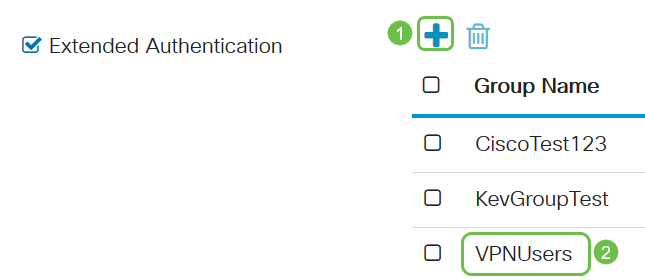
Note: In this example, VPNUsers is chosen.
Step 15. Under Pool Range for Client LAN, enter the first IP and end IP address that can be assigned to a VPN client. This needs to be a pool of addresses that doesn’t overlap with the site addresses. These may be referred to as virtual interfaces. If you receive a message that a virtual interface needs to be changed this is where you would fix that.

Step 16. Select the Advanced Settings Tab.

Step 17. (Optional) Scroll down to the bottom of the page and select Aggressive Mode. Aggressive Mode feature allows you to specify RADIUS tunnel attributes for an IP security (IPsec) peer and to initiate an Internet Key Exchange (IKE) aggressive mode negotiation with the tunnel. For more information on Aggressive Mode vs. Main Mode click here.

Note: The Compress check box enables the router to propose compression when it starts a connection. This protocol reduces the size of IP datagrams. If the responder rejects this proposal, then the router does not implement compression. When the router is the responder, it accepts compression, even if compression is not enabled. If you enable this feature for this router, you would need to enable it on the remote router (the other end of the tunnel). In this example, Compress was left unchecked.
Step 18. Click Apply.

Step 19. Click Save.

Step 20. Click Apply once again to save the Running Configuration to the Startup Configuration.
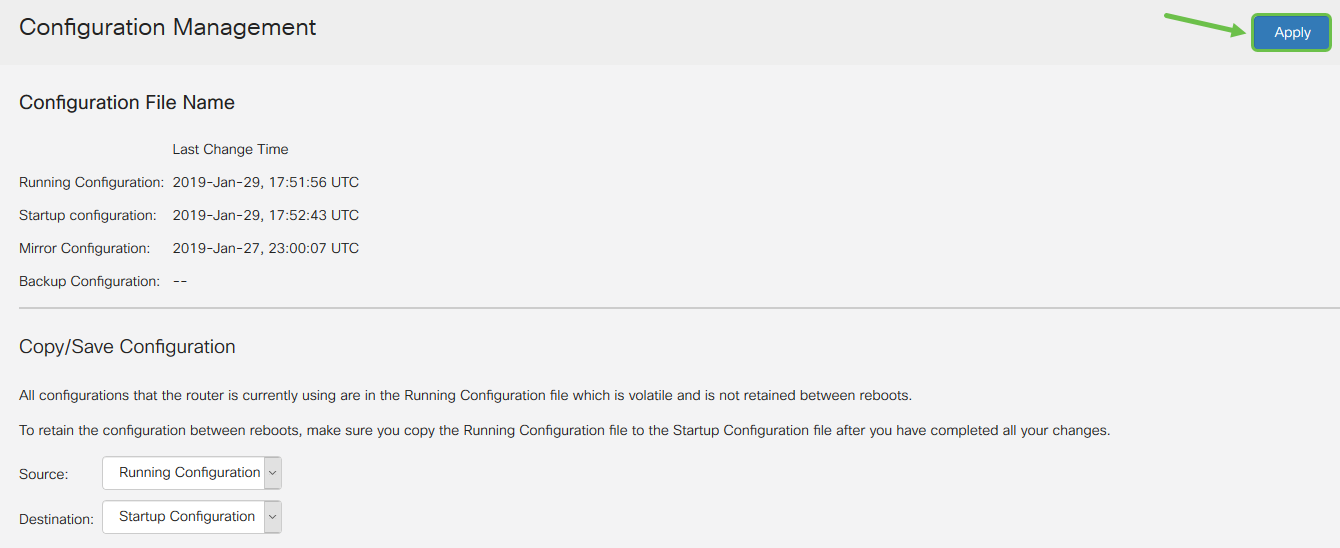
Step 21. When you receive the confirmation, click OK.
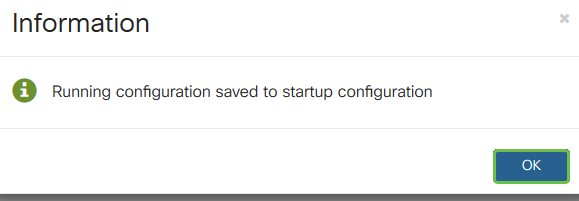
You should now have configured the Client-to-Site Tunnel on the router for TheGreenBow VPN Client.
Configure TheGreenBow VPN Client on the Computer of the Remote Worker
Configure Phase 1 Settings
To download the latest release of TheGreenBow IPsec VPN Client software, click here.
Step 1. Right-click TheGreenBow VPN Client icon. This is located on the lower right corner of the taskbar.

Step 2. Select Configuration Panel.
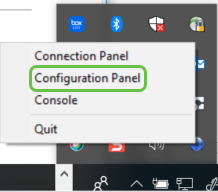
Note: This is an example on a Windows computer. This may vary depending on the software you use.
Step 3. Select IKE V1 IPsec tunnel creation wizard.
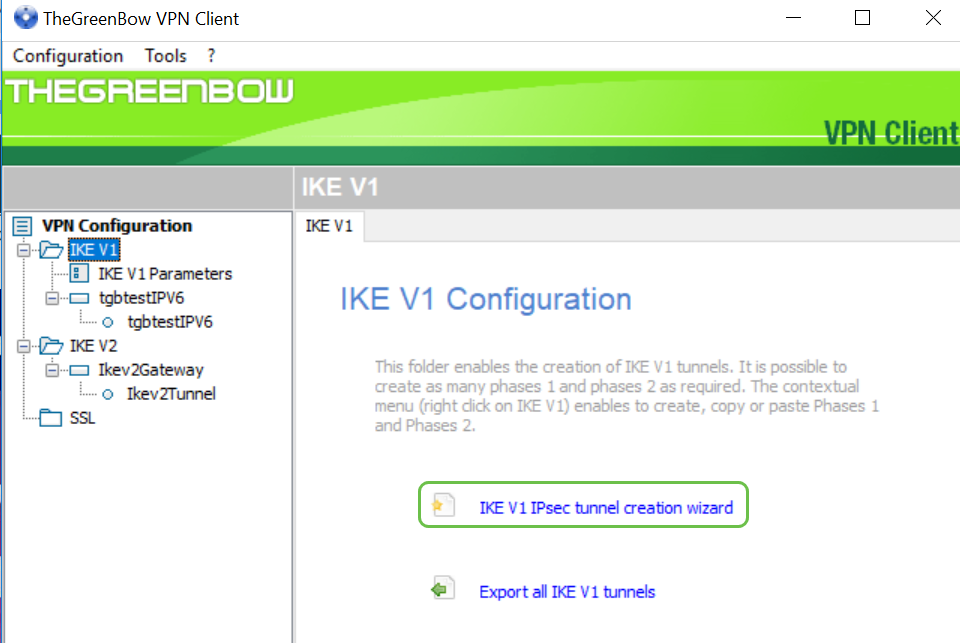
Note: In this example, IKE Version 1 is being configured. If you would like to configure IKE Version 2, you would follow the same steps but right-click on the IKE V2 folder. You would also need to select IKEv2 for the IPsec profile on the router at the site.
Step 4. Fill in the public WAN IP address of the router at the site (office) where the file server is located, the Preshared Key, and the private internal address of the remote network on site. Click Next. In this example, the site is 24.x.x.x. The last three octets (sets of numbers in this IP address) have been replaced with an x to protect this network. You would enter the full IP address.
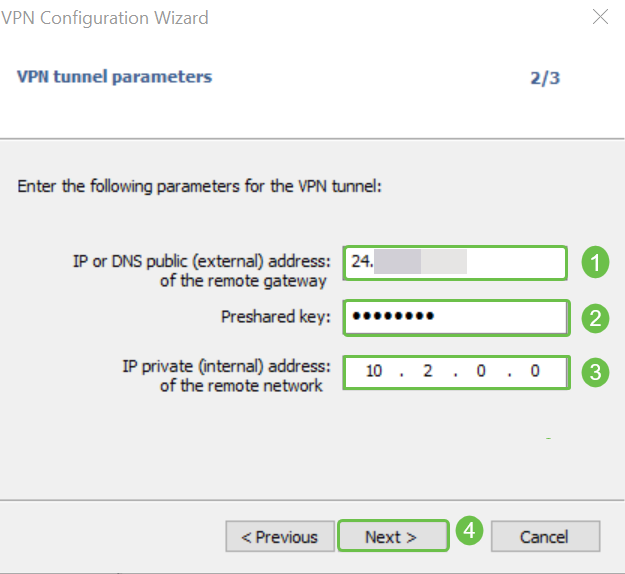
Step 5. Click Finish.

Step 6 (Optional) You can change the IKE V1 Parameters. TheGreenBow Default, Minimal, and Maximal lifetime can be adjusted. In this location you can enter whatever the range of the lifetime that the router accepts.
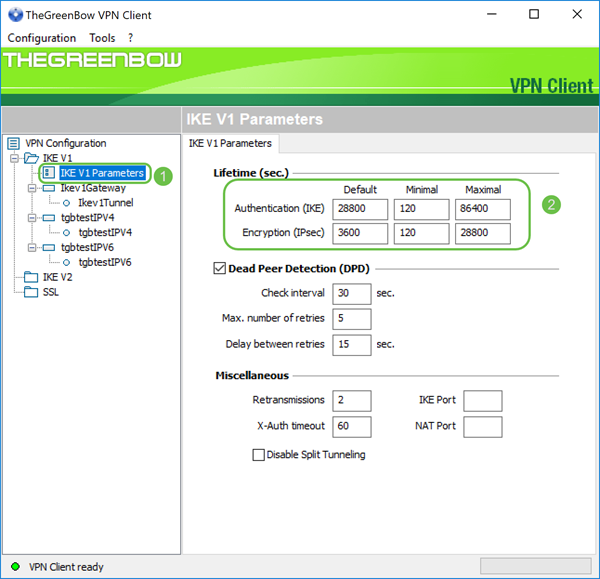
Step 7. Click on the gateway you created.
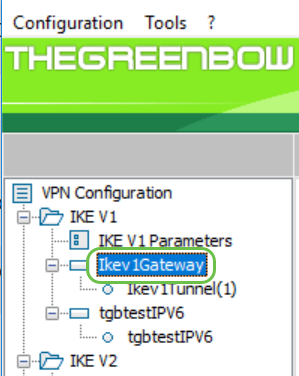
Step 8. In the Authentication tab under Addresses you will see a drop-down list of local addresses. You can choose one or select Any, as shown below.
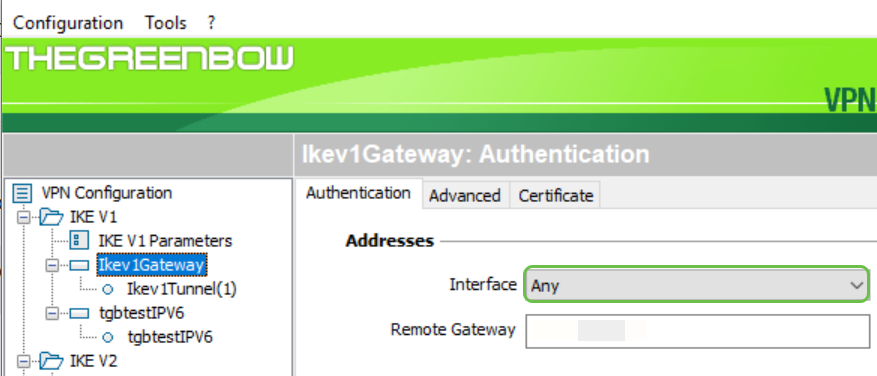
Step 9. Enter the address of the remote gateway in the Remote Gateway field. This can be an IP address or a DNS name. This is the address of the public IP address for router at the site (office).
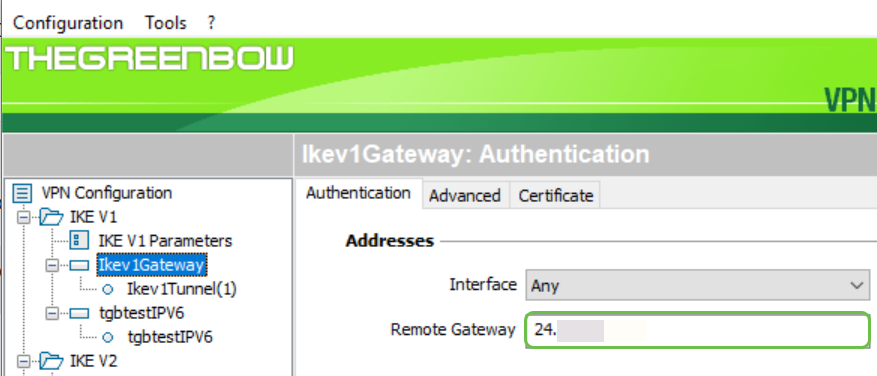
Step 10. Under Authentication, choose the authentication type. The options are:
- Preshared Key — This option will let the user use a password that has been configured on the VPN gateway. The password has to be matched by the user to be able to establish a VPN tunnel.
- Certificate — This option will utilize a certificate to complete the handshake between the VPN Client and the VPN Gateway.
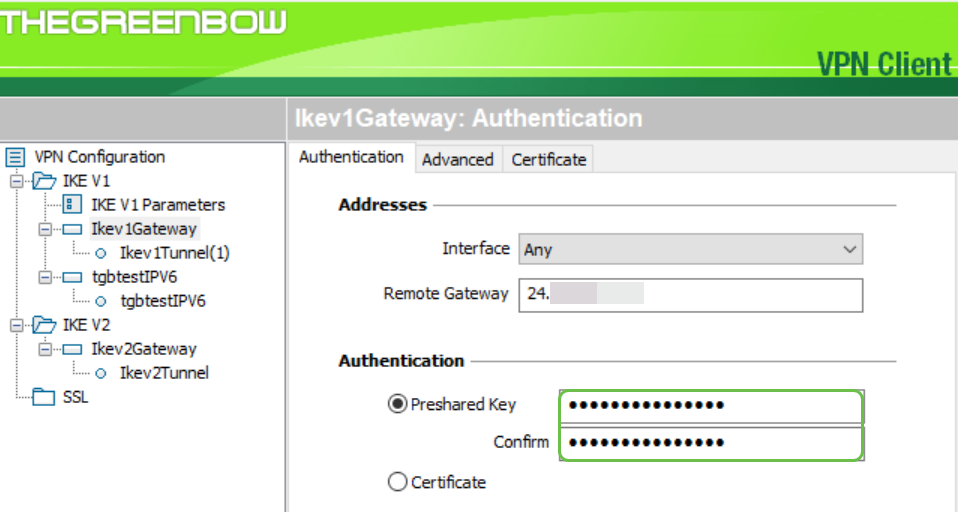
Note: In this example, the Pre-shared Key that was configured on the router was entered and confirmed.
Step 11. Under IKE, set the Encryption, Authentication, and Key Group settings to match the configuration of the router.
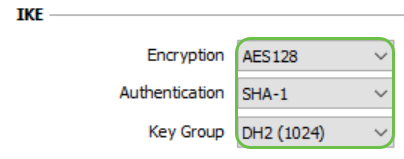
Step 12. Click the Advanced tab.

Step 13. Under Advanced features, check the Mode Config and the Aggressive Mode check box. The Aggressive Mode was selected on the RV160 in the Client-to-Site profile of this example. Leave the NAT-T setting to Automatic.
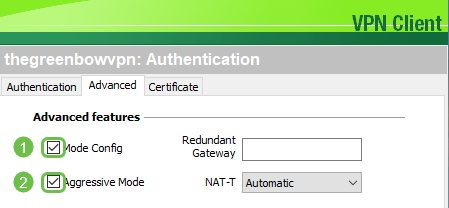
Note: With Mode Config enabled, TheGreenBow VPN Client will pull settings from the VPN gateway to attempt to establish a tunnel. NAT-T makes establishing a connection faster.
Step 14. (Optional) Under X-Auth, you can check the X-Auth Popup check box to automatically pull up the login window when starting a connection. The login window is where the user enters their credentials to be able to complete the tunnel.
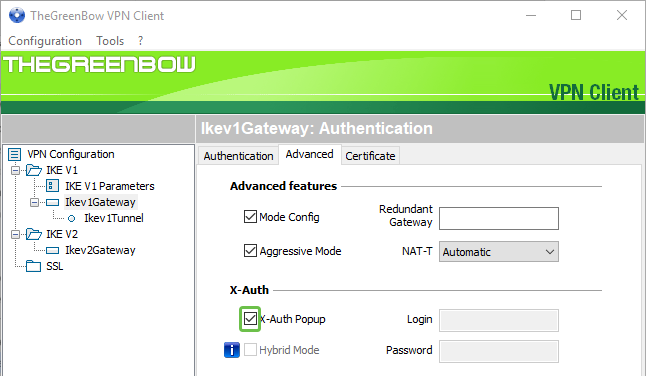
Step 15. (Optional) If you don’t select X-Auth Popup, enter your username in the Login field. This is the user name that was entered when a user account was created in the VPN gateway and password at the site.

Step 16. Under Local and Remote ID, set the Local ID and the Remote ID to match the settings of the VPN gateway.

Note: In this example, both Local ID and Remote ID are set to IP Address to match the settings of the RV160 or RV260 VPN gateway.
Step 17. Under Value for the ID, enter the local ID and remote ID in their respective fields. The local ID is the WAN IP address for the client. This can be found by doing a web search for “What’s my IP”. The remote ID is the WAN IP address of the router at the site.

Step 18. Click Configuration and choose Save.
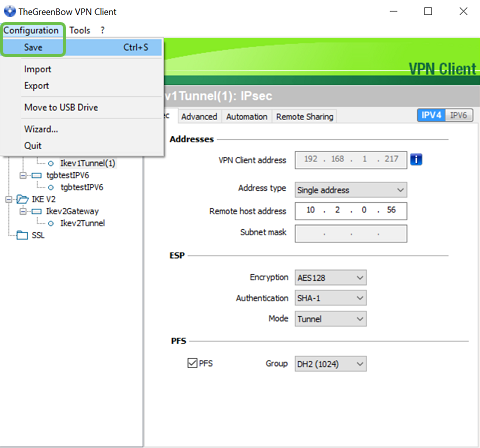
Configure Tunnel Settings
Step 1. Click the IKev1Tunnel(1) (yours may have a different name) and the IPsec tab. The VPN Client address is automatically populated if you selected Mode Config in the Ikev1Gateway advanced settings. This displays the local IP address of the computer/laptop at the remote location.

Step 2. Choose the address type that the VPN client can access from the Address type drop-down list. This can be a Single address, Range of addresses, or a Subnet address. The default, Subnet address, automatically includes the VPN Client address (the local IP address of the computer), Remote LAN address, and Subnet mask. If Single address or Range of addresses is selected, these fields will need to be filled in manually. Enter the network address that should be accessed by the VPN tunnel in the Remote LAN address field and the subnet mask of the remote network in the Subnet mask field.

Note: In this example, Single address was chosen and the local IP address of the router at the site is entered.
Step 3. Under ESP, set the Encryption, Authentication, and Mode to match the settings of the VPN gateway at the site (office).

Step 4. (Optional) Under PFS, check the PFS check box to enable Perfect Forward Secrecy (PFS). PFS generates random keys for encrypting the session. Select a PFS group setting from the Group drop-down list. If it was enabled on the router, it should also be enabled here.

Step 5. (Optional) Right-click on the name of the Ikev1Gateway and click on the rename section if you would like to rename it.
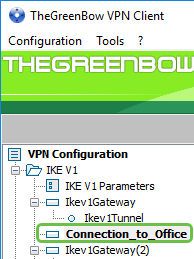
Step 6. Click Configuration and choose Save.
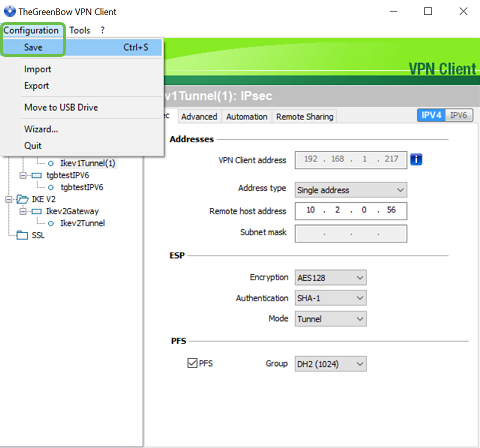
You should now have successfully configured TheGreenBow VPN Client to connect to the RV160 or RV260 router through VPN.
Start a VPN Connection as a Client
Step 1. Since you have TheGreenBow open, you can right-click on the tunnel and select Open Tunnel to begin a connection.

Note: You can also open a tunnel by double-clicking on the tunnel.
Step 2. (Optional) If you are beginning a new session and had closed TheGreenBow, click TheGreenBow VPN Client icon on the right side of the screen.

Step 3. (Optional) This step is only necessary if you are setting up a new session and followed Step 2. Choose the VPN connection that you need to use and then click OPEN. The VPN connection should start automatically.
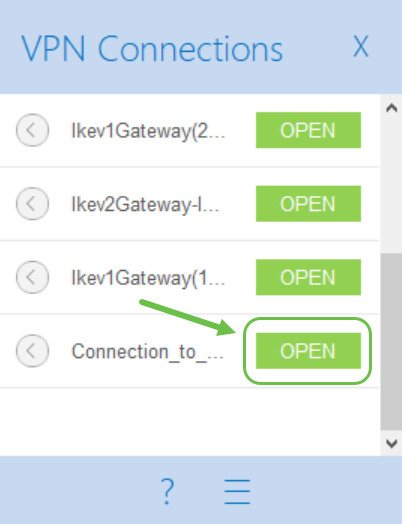
Step 4. When the tunnel is connected a green circle will appear next to the tunnel. If you see an exclamation mark you can click on it to find the error.
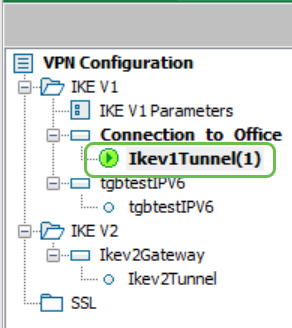
Step 5. (Optional) To verify that you are connected, access the command prompt from the client computer.
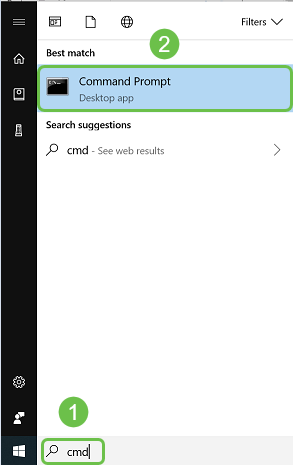
Step 6. (Optional) Enter ping and then the private LAN IP address of the router at the site. If you receive replies you are connected.

Verify VPN Status
Verify the VPN Status at the Site
Step 1. Login to the web-based utility of the VPN gateway of the RV160 or RV260.
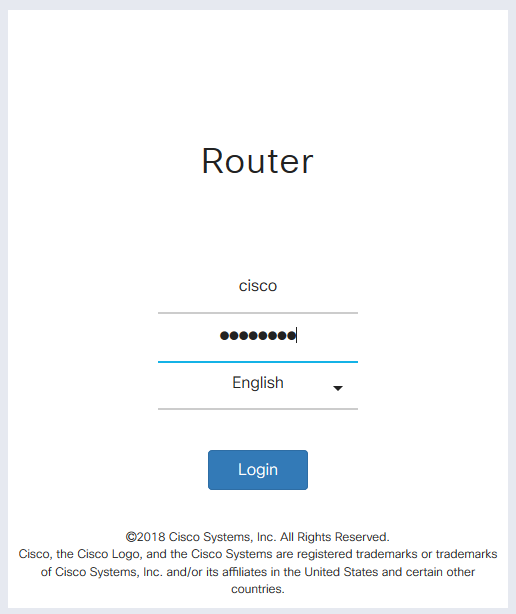
Step 2. Choose Status and Statistics > VPN Status.
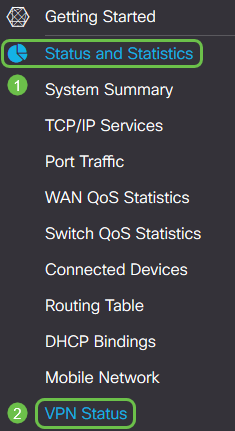
Step 3. Under Client-to-Site Tunnel Status, check the Connections column of the Connection Table. You should see the VPN connection confirmed.

Step 4. Click on the eye icon to see more details.

Step 5. The details of the Client-to-Site VPN Status are shown here. You will notice the WAN IP address of the client, the local IP address that was assigned from the pool of addresses that was configured at setup. It also shows bytes and packets sent and received as well as he connection time. If you would like to disconnect the client, click the blue broken chain icon under Action. Click the x in the upper right corner to close after inspection.

Conclusion
You should now have successfully set up and verified the VPN connection on the RV160 or RV260 router, and have TheGreenBow VPN Client configured to connect to the router through VPN as well.
 Feedback
Feedback